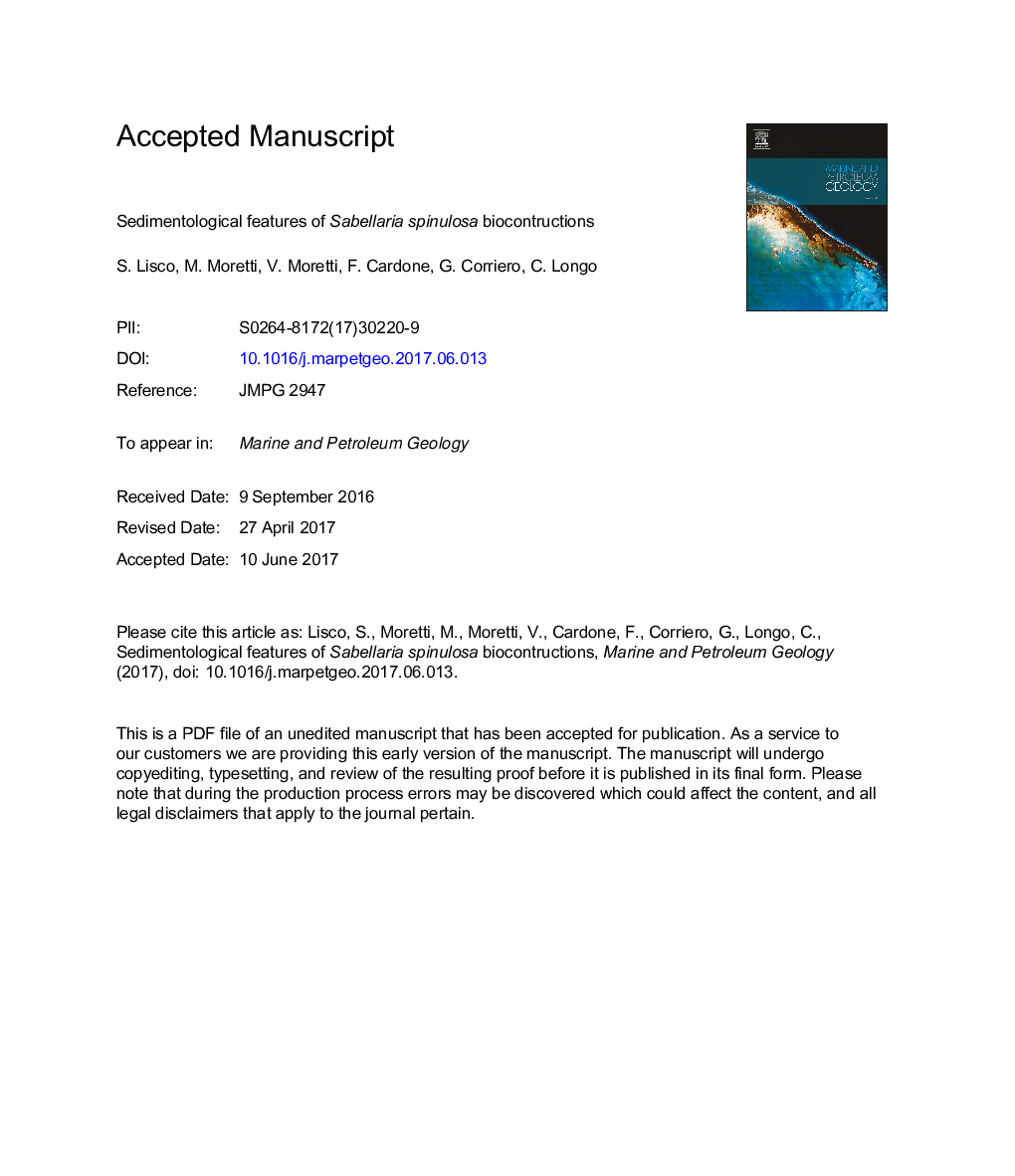| Article ID | Journal | Published Year | Pages | File Type |
|---|---|---|---|---|
| 5782139 | Marine and Petroleum Geology | 2017 | 30 Pages |
Abstract
Sedentary polychaete Sabellaria spinulosa (Leukhart, 1849) is a suspension feeder that builds tubes by cementing together terrigenous particles. Under a set of environmental conditions, S. spinulosa can form reefs (consisting of hundreds or thousands of worm tubes) that can vary greatly in thickness, size and patchiness. The more-developed reefs form in areas with a large and continuous supply of sand, turbulent water, nutrient availability and rocky seafloor. Recently, for the first time in the Mediterranean area, a large reef of S. spinulosa has been discovered along the northern Gargano coast at Torre Mileto (Adriatic Sea, southern Italy). In this paper, we will detail the main sedimentological data of this worm reef. In order to evaluate the kind of terrigenous particles involved in the worm tube constructions, detailed grain-size and petrographic analyses were carried out on both reef and soft-sediment substrate samples. It is demonstrated that S. spinulosa selects sands on the basis of their grain size and shape, and not their composition. It is also shown that some seasonal variations of these parameters are the result of the interplay between reef growth and degradation periods mainly related to physical processes. In particular, the degradation stages seem to be induced mainly by storm wave action, while the reef growth is the result of the complex interaction between ecological and physical processes.
Keywords
Related Topics
Physical Sciences and Engineering
Earth and Planetary Sciences
Economic Geology
Authors
S. Lisco, M. Moretti, V. Moretti, F. Cardone, G. Corriero, C. Longo,
